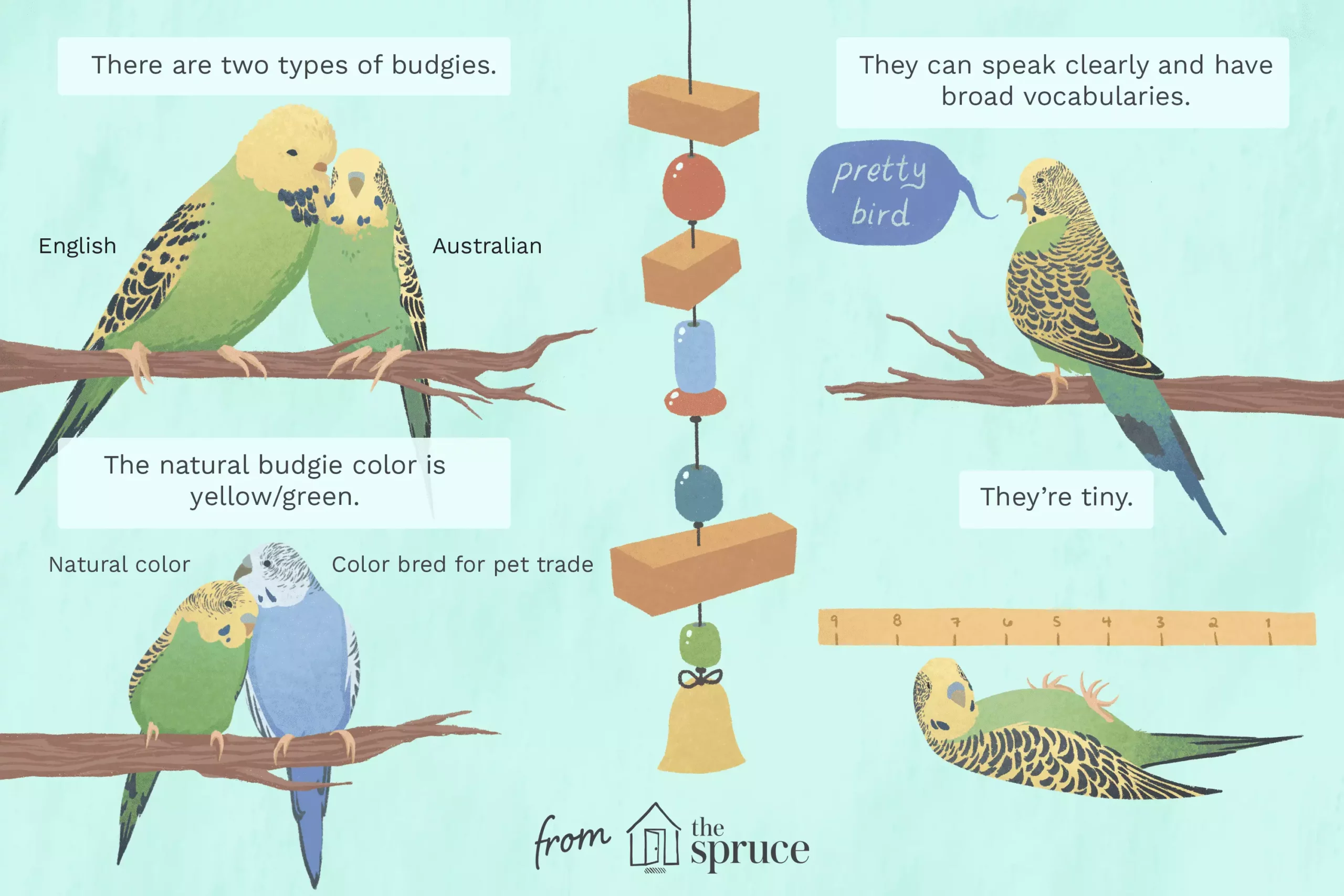Budgerigars, commonly known as budgies, are often referred to as parakeets, leading to some confusion among bird enthusiasts. While it is true that all budgerigars fall under the category of parakeets, not all parakeets are budgerigars. The term “parakeet” encompasses a wide variety of small to medium-sized species that exhibit diverse characteristics in terms of size, shape, and color. For instance, while Indian ringneck parakeets can grow up to 16 inches long, budgies are significantly smaller, typically measuring between 7 to 8 inches in captivity. This variance underscores the importance of using the precise terminology when discussing these captivating birds.
Interestingly, there are two primary types of budgerigars: the traditional Australian budgie and the larger English budgie. The Australian variety is the quintessential wild breed, known for its vibrant yellow and green plumage. In contrast, English budgies have been selectively bred in the UK to enhance their physical traits and are often sought after for the pet trade due to their size and appealing aesthetics. The differences become apparent when observing both varieties side by side; English budgies generally feature larger heads and a more robust feather structure than their Australian relatives.
Many bird lovers are drawn to budgies for their remarkable ability to mimic human speech. Although there is no foolproof method to ensure that a budgie will talk, these birds have proven to possess an exceptional talent for vocal reproduction, often surpassing bigger parrots like macaws and cockatoos in clarity and vocabulary. Their distinctive gravelly voices can be endearing, and with proper training and socialization, many budgies can adopt phrases and employ them contextually. This trait makes them an excellent choice for prospective pet owners seeking a sociable and communicative companion.
While pet shops are frequently filled with an array of colorful budgies, it is noteworthy that the only naturally occurring color in wild budgies is yellow/green. All other color variations—such as blues, whites, and other mutations—result from selective breeding, a practice cultivated to cater to the pet market. It is essential for potential budgie owners to acknowledge that these vibrant colorations are not found in nature, as seeing a blue budgie flitting through the wild would be an impossible feat.
Despite being small in size, budgies require certain dietary considerations to thrive physically. Contrary to the prevalent myth that seeds should constitute the bulk of their diet, that practice can lead to serious health problems. Veterinary professionals advocate a balanced diet comprising high-quality pellets, fresh fruits, vegetables, and leafy greens as foundational elements. While seeds can be included as occasional treats, they should not be the primary food source. Additionally, potential hazards—such as chocolate, caffeine, and alcohol—must be avoided entirely to ensure the welfare of these charming birds.
With the right care, a budgie can live anywhere from 7 to 15 years, although this lifespan is highly contingent on genetic factors, quality of care, and overall environment. Acquiring a budgie from a reputable breeder who can provide insight into the bird’s lineage is advisable. To promote longevity, owners must prioritize a nutritious diet, regular veterinary check-ups, and a clean living environment, avoiding any exposure to toxic substances. Enrichment through toys, social interaction, and clean cages will provide a fulfilling life for these playful creatures.
One everyday challenge for budgie owners may be determining the age of their feathered friend. Visual indicators such as head markings can provide insight; for instance, head stripes that extend down to the beak indicate a young bird, typically aged between 3 to 4 months. The coloration of their beak also plays a significant role; darker beaks signify a bird under 12 weeks old. Furthermore, observations of eye color can assist in ageing—black eyes without visible irises suggest a bird younger than five months, while the presence of a white iris ring indicates the bird is at least eight months old.
Budgerigars are not just charming pets; they possess characteristics that can delight and astound their owners. Understanding their unique traits, care requirements, and the distinctions between various types of parakeets can help dedicated bird lovers appreciate these delightful companions even more.

